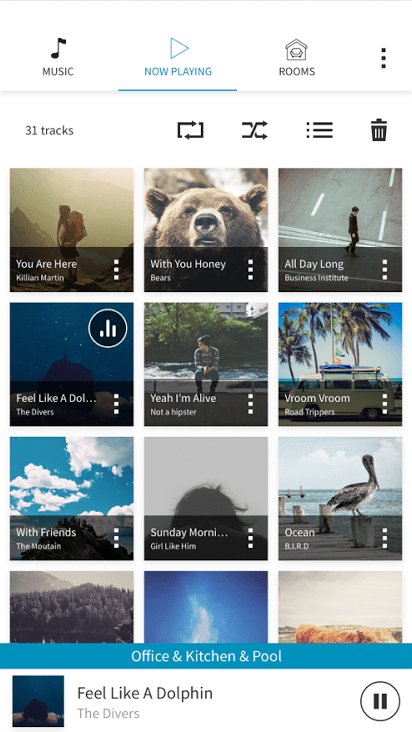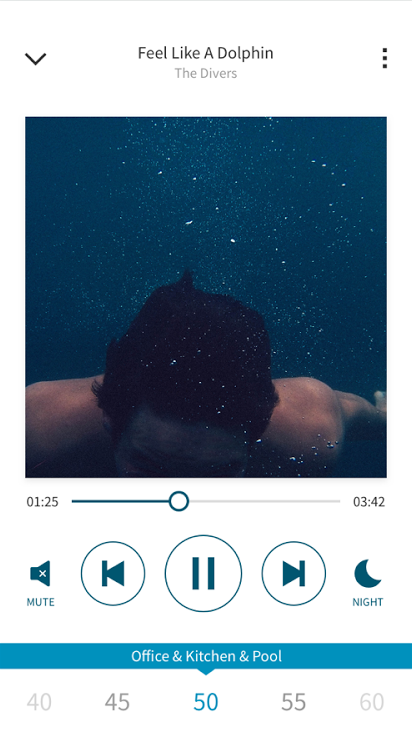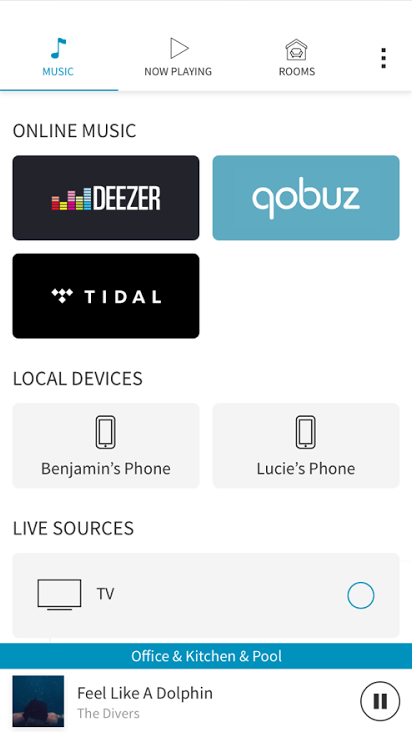“Devialet’s Phantom is the finest all-in-one wireless speaker money can buy.”
- Pure and lyrical upper register
- Best-in-class bass response
- Thrilling dynamic expression
- Powerful, distortion free sound
- Clear and wonderfully present detail
- Volume control not granular enough
- Heavy as a rock
French audio maker Devialet recently released the latest in its luxurious line of wireless speakers, the new Phantom Gold. Thanks in part to its near $3,000 asking price, the speaker received no shortage of attention. But the Gold is essentially just a supercharged version of prior Phantom models, which now come in three flavors: Gold ($2,990), Silver ($2,390), and the original Phantom ($2,000).
Devialet, which made a name for itself with a line of award-winning audiophile amplifiers, has spared no expense and left no hyperbolic phrase unturned to market what it calls “a new category of audio products.” Phrases like “1,000 times superior to current systems” and a replacement for “all existing systems” leave no doubt that Devialet has laid it all on the line.
With all the spectacle, we couldn’t help but wonder, can the Phantom actually be this good? After all, how could it be, really? We set out to find out.
Out of the box
The Phantom makes a dramatic first impression thanks to its other-worldly design, carved from plastic and aluminum into a sonic spheroid unlike anything else on the market. Perhaps even more remarkable than its futuristic look, however, is its absolutely titanic weight. Once you’ve lugged the box inside, pulling the gleaming white orb from its bed of thick foam feels more like lifting a miniature jet turbine than a wireless speaker, amounting to 26 pounds of dense, hard-shelled technology.
There’s really not much else in the box, besides everyone’s least favorite feature, the thick yellow power cable. The curry-colored eyesore is a puzzling addition to the package, marring what is otherwise the slickest looking French import since the Dassault Rafale fighter jet.
Setup
The most notable thing about the Phantom’s setup is the way the piston drivers on the sides expand and compress when you fire the system up. It makes it seem as though the speaker were about to take flight back to the mother ship. Connecting the system to Wi-Fi is standard fare, requiring you to simply download the Spark app and follow the same instructions as virtually every wireless speaker, setting aside Sonos’ utterly simple single-button initiation.
Features and design
Heavy as a block of lead, and shaped like a cross between a stormtrooper helmet and an alien spacecraft, there’s no doubt the Phantom is a signature design piece. But intriguing as it is on the outside, the Phantom hides its best features inside its eggshell exterior. Under the hood live a myriad of technologies, as well as a laundry list of patents, inventions, and proprietary design features — each seeming to tow its own stack of marketing hyperbole. It’s like the iPhone of speakers.
The Phantom can practically blow the doors off any room.
While the Silver and Gold versions push the wattage to nuclear levels (at 3,000 and 4,500 watts of peak power respectively) the original Phantom’s 750 watt power plant is astronomical in its own right. The system’s sound pressure level (SPL) tops out at 99dB at one meter, placing it somewhere between a motorcycle engine and a jet takeoff from the runway. The Phantom’s 26 pound weight makes it portable in only the loosest sense, but the speaker’s 10-inch width and height and 13-inch depth take up very little space on the mantle.
Nuzzled into its laser-cannon front face are custom aluminum drivers, including a small tweeter and a midrange driver, while dual aluminum woofers push those piston-like shells at the speaker’s sides. The Phantom’s claimed frequency response — a dazzling 16Hz-25khz — will no doubt cause audioholics to perk up in disbelief and collectively ask, “How is that much bass even possible from such a small speaker?”
It all starts with the Phantom’s pressurized aluminum core, which is hermetically sealed with a claimed 1.2 tons of pressure. Those piston-like “hermetic woofers” at the sides push in and out with over 66 pounds of force to create what Devialet calls Heart Bass Implosion (HBI), designed to produce a “unique ultra-dense sound with physical impact.” While the human ear can only hear down to 20Hz, sounds below that are thought to create perceivable variations in air pressure. In other words, audible or not, this thing can practically blow the doors off any room.
HBI is just one of the many acronyms on the Phantom’s resume. There’s also Active Cospherical Engine (ACE) technology, a fancy way of describing the Phantom’s spherical shape. Devialet says it’s intended to mimic the “thrusting sphere of Olson” (Harry Olson was a pioneer of acoustics design), which the company calls the “perfect acoustical shape.”
The system also uses an Analog Digital Hybrid (ADH) amplifier, meant to mix “the sophistication” of Class A analog amplifiers with the minute size of Class D digital amps, as well as Speaker Active Matching (SAM). Brought along from Devialet’s amplifier line, SAM is the company’s proprietary DSP technology designed to precisely adapt the sound laid down in the studio to match each of the Phantom’s drivers in real time.
The system offers both Wi-Fi and Ethernet connections, as well as an optical input for plugging in directly. Spotify, Deezer, and Tidal are all supported, and you can also play tracks wirelessly from your phone, computer, or storage drive. Through Devialet’s proprietary Spark app (Android | iOS), you can even go multiroom with the Phantom — provided you can lay out the dough for several of these speakers. While the Phantom is designed for omnidirectional sound, it can also be stereo paired with a twin, though the required Dialog Hub will ramp up the starting price to $4,309 total.
Other features include a Texas Instruments DAC supporting 24-bit/192kHz files in virtually all varieties, an 800MHz ARM Cortex-A9 MPCore dual-core processor
Performance
With 750 watts of power, a hermetically sealed interior, and military grade construction, we were fully prepared for the Phantom to annihilate our listening room with shockwaves of skull rattling sound. And indeed, the system is capable of brain-melting sonic assaults of distortion-free audio, fit to rattle your windows and shake the door off its hinges.
What we weren’t prepared for, however, is the unparalleled sonic intimacy the Phantom provides, ushering forth rich and weighty detail, pinpoint-accurate transients, expansive dynamic expression, and glistening recreations of each guitar tone, vocal line, or snare snap. From the thick tape hiss you can make out in Brian Wilson’s classic Wouldn’t It Be Nice to the spun gold of Chris Thile’s nimble mandolin tightropes, the Phantom’s unbridled clarity translates into a listening experience more akin to a pair of audiophile headphones than a wireless speaker.
That means you don’t just hear the acoustic guitarist’s string stop, you actually hear the palm of his hand release from the body of the guitar as he pulls it away. It means sparkling vocals so clear you’ll hear lyrics you’ve missed in 100 listens. In fact, the speaker does so many things so well, it’s hard to choose a favorite moment. Is it the woody rattle of the bass strings from Nickel Creek’s Out of the Woods? Is it the tactile rainbow of latin percussion in Snarky Puppy’s Go, or the fiery crunch of the electric guitar that leaps forth in Muse’s Drones? All are contenders.
That said, it’s not all gravy atop this $2,000 biscuit. While the speaker does render sound in all directions, its mono soundstage can occasionally get claustrophobic, putting a snag in your audiophile reverie. The Phantom’s lack of stereo imaging can feel even more pronounced than other wireless speakers, partly because it’s so capable in other sound spectrums. In some songs, instruments sound a little cluttered and pressed together, as if each track is swimming against the current, competing for its own spotlight at the front of the soundstage.
The Phantom’s brain-melting sonic assault is fit to rattle your windows and shake the door off its hinges.
Another point of contention is the lack of granular control via the Spark app. With a machine so sensitive and potent, we expect total dominion over the volume. Instead, the speaker can get caught between being too soft or too loud. The lack of EQ control is also disappointing — especially at this price.
Still, the Phantom’s talents elsewhere tend to make up for its shortcomings — especially when you crank up the volume and set off this atom bomb. In short, no other personal wireless speaker we’ve heard comes even close to the thunderous power unleashed by the Phantom at full force. While not as robust as, say, a traditional 12-inch subwoofer, this speaker can give your favorite Too Short joint the full 60Hz treatment, thumping with dance-club authority, while the upper register punches through with stark clarity. That goes for your most raucous rock anthems or your most boisterous orchestral plumes, as well. As loud as you can push it, the Phantom simply doesn’t distort. And though its side pistons may buzz and gyrate, the Phantom holds steady as a rock, creating virtually zero surface rumble.
By now you’re probably saying, “could the Phantom really be ‘1,000 times better’ than other wireless speakers?” The short answer? No freaking way. The latest Sonos Play 5 ($500) and Bowers & Wilkins’ Zeppelin Air ($550) both put up enough grit to discount Devialet’s wild marketing hyperbole — a good reason to dispatch with such bragging.
Yet the Phantom still emerges as the clear winner without breaking a sweat. The Zeppelin Air does a fine job delivering some of the bright and pointed detail the Phantom can produce, especially in the midrange. But the Phantom’s fluid and lyrical upper register far outshines it in most examples. And when it comes to heavy bass, it’s not even a contest. The Zeppelin drops out long before the Phantom, abandoning a grand canyon of peaks and valleys below.
Conversely, the Sonos does a decent job carving out the bass the Zeppelin ignores. It doesn’t reach as low as the Phantom, and the resonance of the bass itself is far less refined, but it gives you plenty of boom for your buck. The Sonos comes up short in music’s finer subtleties, however, unable to compete with many of the Phantom’s best sonic qualities. Then again, if you’ve never heard the magnification of each sonic moment the Phantom can render, will you miss it? For $1,500, the answer for most listeners is no.
In other words, if you can’t afford to buy one, you shouldn’t even listen to the Phantom. When it comes to quality wireless sound on a budget, ignorance truly is bliss.
Warranty and updates
The speaker also includes Devialet’s EVO system, which supports automatic upgrades to help future-proof the speaker. In addition to the EVO updating system, the Phantom also comes with a two-year warranty.
Conclusion
As promised, Devialet’s Phantom sets a new milestone in wireless multiroom audio. Whether it’s rendering earth-shaking bass or putting a soft touch on the finest of details, the speaker is an industry leader in almost every category — including price.
There are better ways to blow $2,000, inside and outside the world of audio. But if you can afford to drop that kind of cash without feeling the sting, the Phantom is the finest all-in-one wireless speaker money can buy.












